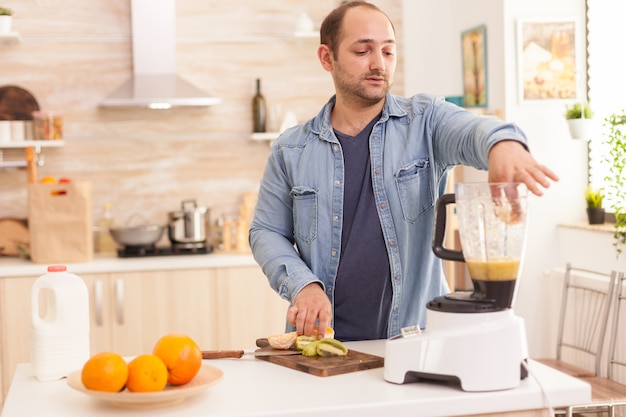We all know that healthy eating is crucial, and part of that is making smart choices about the ingredients we use. cooking oils, in particular, can be a bit of a confusing topic. There are so many different types, with varying health claims and cooking applications. So, how do you navigate this oily jungle and choose the best oils for your kitchen?
I've been on a health journey for a while now, and I've definitely learned a thing or two about oils. I've tried everything from the classics like olive oil to trendy superfoods like flaxseed oil. And I've even gone down the rabbit hole of researching which oils are best for frying, baking, and everything in between.
Today, I'm sharing all my knowledge with you! We're going to dive deep into the world of healthy cooking oils, from the basics to the finer details. We'll break down the different types of oils, their unique benefits, and how to choose the right ones for your needs. I'll also share some of my favourite recipes that showcase these healthy oils. By the end, you'll have everything you need to make informed choices in the kitchen and feel good about the food you're cooking!
Part 1: Cracking the Code of Fats

Before we get into specific oils, let's talk about the building blocks of fat itself. Understanding these building blocks will help you make sense of all the different types of oils.
1.1 Fatty Acids: The Building Blocks of Fat
Fats are made up of molecules called fatty acids. These fatty acids come in different forms, and each form has a different impact on your health. There are three main types of fatty acids:
- Saturated Fats: These fats are generally considered less healthy, especially when consumed in excess. They're typically solid at room temperature and are found in sources like butter, full-fat dairy products, and tropical oils like coconut oil. While not all saturated fats are bad, it's important to consume them in moderation.
- Unsaturated Fats: These are the good guys! They're liquid at room temperature and come in two main types:
- Monounsaturated Fats: Found in oils like olive oil and avocado oil, these fats can help lower bad cholesterol (LDL) and raise good cholesterol (HDL). They're your heart-healthy heroes.
- Polyunsaturated Fats: These fats, found in oils like sunflower oil and corn oil, are essential for your body and contain omega-3 and omega-6 fatty acids. These are crucial for brain health, reducing inflammation, and supporting overall well-being.
- Trans Fats: These are the bad guys! Trans fats are artificially created through a process called hydrogenation, which turns liquid oils into solid fats. They're often found in processed foods and are linked to heart disease and other health problems. It's best to avoid trans fats altogether!
1.2 The Importance of Balance
The key to a healthy diet is finding a balance. It's not about completely eliminating all saturated fats, but rather about consuming them in moderation and making sure you're getting plenty of healthy unsaturated fats.
By understanding the different types of fatty acids, you can make informed choices about the oils you use and ensure that you're fueling your body with the right kind of fats.
Part 2: The Stars of the Oil World

Now that we've covered the basics of fats, let's dive into some of the most popular and healthy cooking oils. These oils each have unique qualities and benefits, making them suitable for different cooking needs and dietary preferences.
2.1 Olive Oil: The Mediterranean Classic
Olive oil reigns supreme in the world of healthy cooking oils. It's been a cornerstone of the Mediterranean diet for centuries, and for good reason! Packed with monounsaturated fats, antioxidants, and vitamins, it's a true superstar for heart health.
I love using olive oil for everyday cooking. It adds a delicious, slightly fruity flavour to dishes, and I don't have to worry about it being too high in saturated fats. extra virgin olive oil (EVOO) is my favourite for its intense flavour and aroma. It's perfect for salad dressings and drizzling over finished dishes. For everyday cooking, regular virgin olive oil is a great choice as well, offering a milder flavour and a slightly lower price tag.
2.2 Avocado Oil: The High-Heat Hero
Avocado oil is another fantastic option, gaining popularity for its unique qualities. It's brimming with monounsaturated fats and boasts a high smoke point, making it perfect for high-heat cooking methods like stir-fries, pan-frying, and grilling. Plus, it has a mild flavour that won't overpower your dishes.
I recently discovered the joys of avocado oil for my stir-fries. It holds up beautifully at high temperatures, doesn't smoke or break down, and adds a touch of richness to the dish. I also like to drizzle a little avocado oil over my salads for a boost of flavour and healthy fats.
2.3 Coconut Oil: The Versatile Multitasker
Coconut oil is a bit of a controversial one. It's high in saturated fat, but these fats are unique, known as medium-chain triglycerides (MCTs). MCTs have been linked to various health benefits, including improved cholesterol levels and increased energy.
I love using coconut oil for baking. It gives baked goods a wonderful texture and adds a subtle coconut flavour. It also has a high smoke point, making it suitable for frying. However, I do use it sparingly, as it is high in saturated fat.
2.4 Flaxseed Oil: The Omega-3 Powerhouse
Flaxseed oil is a champion when it comes to omega-3 fatty acids. It's also a good source of fibre and antioxidants. But there's a catch: it has a low smoke point, making it unsuitable for high-heat cooking.
I use flaxseed oil as a drizzle over salads or in smoothies, giving them a subtle nutty flavour and a boost of omega-3s. I keep it in the fridge to maintain its freshness.
Part 3: Cooking with Confidence: Tips and Tricks

Now that you have your healthy oils, let's talk about how to use them effectively. Understanding a few key concepts will help you unlock the full potential of your oils and cook delicious, healthy meals.
3.1 Smoke Point: The Temperature Threshold
One of the most important considerations when cooking with oil is its smoke point. This is the temperature at which the oil starts to break down and release harmful chemicals. The smoke point is a good indicator of an oil's stability and its suitability for different cooking methods.
Here's a quick guide to the smoke points of some popular oils:
| Oil | Smoke Point (°F) |
|---|---|
| Avocado Oil | 520°F |
| Coconut Oil | 350°F |
| Olive Oil (extra virgin) | 375°F |
| Flaxseed Oil | 225°F |
Generally, oils with higher smoke points are ideal for high-heat cooking methods like frying, grilling, and sautéing. For lower heat methods like baking and roasting, you can use oils with lower smoke points.
3.2 Storage Matters: Protecting Your Oils
To ensure your oils stay fresh and flavorful, proper storage is crucial. Keep your oils in airtight containers in a cool, dark place. Light and heat can degrade oils, causing them to become rancid. No one wants rancid oil in their kitchen!
3.3 Expanding Your Culinary Horizons
Don't be afraid to get creative with your oils. There are endless possibilities for incorporating them into your dishes and adding new dimensions of flavour and richness.
For instance, you can create your own delicious salad dressings using olive oil and lemon juice. Add a drizzle of avocado oil to soups and stews for a touch of creaminess. And don't forget about the power of a good marinade! A mixture of olive oil, herbs, and spices can transform any protein into a culinary masterpiece.
Part 4: Choosing Sustainable Options
Beyond personal health, it's important to consider the environmental impact of the food we consume. Choosing sustainably produced oils can be a rewarding way to support ethical practices and reduce your carbon footprint.
Look for oils with certifications like "organic" or "fair trade," indicating that the oil was grown and produced in an environmentally friendly way. Additionally, consider the impact of shipping. Choosing locally produced oils can help minimize the environmental burden of transportation.
Making conscious choices about the oils you buy can make a difference for both your health and the planet.
Part 5: Recipes to Ignite Your Taste Buds
Now for the fun part! Here are a few of my favourite recipes that highlight the deliciousness and versatility of these healthy oils.
5.1 Roasted Vegetable Medley with Herbs
This simple yet flavorful recipe showcases the versatility of olive oil and brings out the natural sweetness of seasonal vegetables.
Ingredients:
- 1 pound mixed vegetables (broccoli, carrots, zucchini, bell peppers)
- 2 tablespoons olive oil
- 1/2 teaspoon salt
- 1/4 teaspoon black pepper
- 1 tablespoon chopped fresh herbs (rosemary, thyme, or oregano)
Instructions:
- Preheat oven to 400°F (200°C).
- In a large bowl, toss vegetables with olive oil, salt, pepper, and herbs.
- Spread vegetables in a single layer on a baking sheet.
- Roast for 20-25 minutes, or until tender and slightly browned.
5.2 salmon with lemon and Dill
This recipe combines the richness of salmon with the bright flavours of lemon and dill, showcasing the versatility of olive oil for both cooking and finishing dishes.
Ingredients:
- 1 pound salmon fillets
- 1 tablespoon olive oil
- 1 lemon, sliced
- 2 tablespoons fresh dill
- Salt and pepper to taste
Instructions:
- Preheat oven to 375°F (190°C).
- Place salmon fillets in a baking dish.
- Drizzle with olive oil and season with salt and pepper.
- Top with lemon slices and dill.
- Bake for 15-20 minutes, or until salmon is cooked through.
5.3 Chicken Stir-fry with Peanut Sauce
This recipe showcases the high-heat capabilities of avocado oil, making it perfect for stir-frying. The peanut sauce adds a delightful savoury flavour and a touch of richness.
Ingredients:
- 1 pound chicken breast, cut into bite-sized pieces
- 1 tablespoon avocado oil
- 1 cup mixed vegetables (broccoli, carrots, peppers)
- 1/2 cup peanut sauce
- 1/4 cup chopped peanuts
Instructions:
- Heat avocado oil in a large skillet or wok over medium-high heat.
- Add chicken and cook until browned on all sides.
- Add vegetables and cook until tender-crisp.
- Pour peanut sauce over chicken and vegetables and stir to combine.
- Garnish with chopped peanuts and serve over rice or noodles.
Part 6: FAQs: Addressing Your Oil Queries
You've got questions, I've got answers! Let's dive into some common queries about healthy cooking oils.
6.1 What is the best oil for frying?
Avocado oil and coconut oil are both excellent choices for frying. They have high smoke points and can withstand the high temperatures needed for frying without breaking down. Just be sure to use them sparingly, as they are higher in saturated fat.
6.2 Is olive oil good for baking?
Olive oil can be used for baking, but it's best to use it for recipes that don't require a high temperature. Extra virgin olive oil has a strong flavour that can be overpowering in some baked goods. For baking, I often use regular virgin olive oil or a blend of olive oil and another oil with a higher smoke point.
6.3 What is the healthiest oil for everyday cooking?
For everyday cooking, olive oil and avocado oil are both excellent choices. They're both rich in monounsaturated fats and offer a variety of health benefits. If you're looking for a more neutral flavour, avocado oil is a great option. But if you love that olive oil flavour, stick with olive oil.
6.4 What oil should I use for salad dressings?
Extra virgin olive oil is the classic choice for salad dressings. It adds a delicious flavour and a touch of richness. You can also use avocado oil or a blend of olive oil and another oil with a mild flavour.
6.5 How long can I store cooking oil?
It's best to store cooking oils for no more than 6 months to ensure freshness. Store them in airtight containers in a cool, dark place to prevent them from going rancid. You'll know your oil has gone rancid if it has an off-putting odour or flavour.
Part 7: Conclusion: Embracing a Healthy Kitchen
So, there you have it! My comprehensive guide to choosing the healthiest cooking oils for your kitchen. Remember, healthy cooking is all about making informed choices. By understanding the different types of oils and their benefits, you can cook with confidence and nourish your body from the inside out.
Go ahead and experiment with different oils, try new recipes, and most importantly, have fun in the kitchen!
Everyone is watching

Perfect Rice Every Time: The Ultimate Guide to Cooking Rice
Cooking TipsAs a self-proclaimed foodie, I've always been a bit obsessed with rice. It's the foundation of countless cuisi...

Prime Rib Roast Cooking Time Chart: Per Pound Guide
Cooking TipsPrime rib roast. Just the name conjures images of lavish dinners, crackling fires, and hearty laughter. It’s ...

The Ultimate Guide to Cooking Asparagus: Tips, Techniques, and Recipes
Cooking TipsAsparagus. The mere mention of this spring delicacy conjures up images of vibrant green spears, crisp and burs...

Ultimate Guide to Cooking the Perfect Thanksgiving Turkey
Cooking TipsThanksgiving. Just the word conjures up images of overflowing tables laden with delicious food, the scent of r...

How Long to Bake Potatoes in the Oven (Perfect Every Time)
Cooking TipsBaked potatoes are a staple in my kitchen. They're incredibly versatile, delicious, and surprisingly easy to m...
